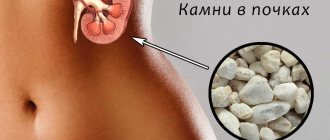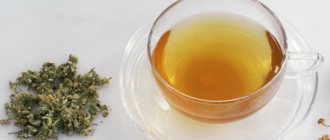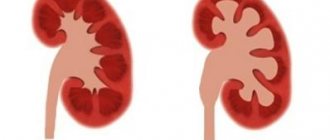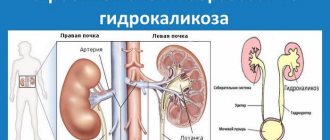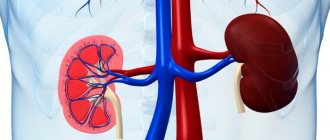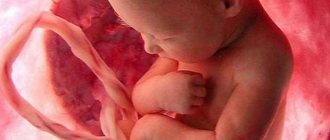Types of plant buds
Apical bud
At the top of the shoot there is usually an apical bud.
Lateral bud (axillary)
The lateral (axillary) buds are located in the axils of the leaves. Axillary buds are located on the stem alternately (willow, linden, alder, aspen) or opposite (elderberry, maple, lilac, ash) (Fig. 113).
Accessory buds
Sometimes buds may develop not in the leaf axil, but on the internodes of the stem, roots or leaves. Such buds are called accessory buds.
Overwintering buds
In temperate latitudes in mid-summer or autumn, in the tropics with the onset of the dry period, the apical and axillary buds enter seasonal dormancy. In temperate latitudes, such buds are called hibernating or dormant. The outer leaves of these buds turn into dense covering bud scales, almost hermetically covering the inner parts of the bud. Covering scales reduce the evaporation of water from the surface of the internal parts of the buds, and also protect the buds from freezing, pecking by birds, etc.
Dormant buds
Not all buds laid in the previous year bloom on trees and shrubs. Many axillary buds remain dormant for a long time, sometimes many years. Such buds are called dormant (Fig. 116). In oak they “sleep” for up to 100 years, in birch - up to 50, in aspen - 40, in honeysuckle - 35, in hawthorn - up to 25 years.
When the apical bud disappears (due to freezing, biting, pruning), the dormant buds begin to grow and grow into elongated shoots. Especially often such shoots develop on oak, elm, maple, rowan, poplar, and apple trees.
Dormant buds are of great importance for restoring the crown when it is damaged by spring frosts and during decorative pruning of trees and shrubs. In cities, the crowns of poplars are often severely pruned, leaving only the trunk or several large side branches. In spring, many young shoots appear on the pruned parts of the tree, which develop from dormant buds (Fig. 117).
Physiological state
What are buds in plants whose organs do not die off in frosty winters or dry summers? And do they even persist during such unfavorable periods? Undoubtedly. Such buds are called dormant. Such structures ensure long-term periodic growth of plants. In winter they are dormant, and with the onset of sunny days they produce new shoots. Annual plants do not form such buds.
There is another type of embryonic shoots. These are dormant buds. They are living, but may not develop throughout the life of the plant. How can they be “forced” to do this? You just need to remove the part of the stem that is located above the dormant buds. In this case, they will give rise to young shoots. Thus, the development of dormant buds occurs as needed. It can lie dormant for a long time or immediately give rise to new shoots.
Structure of plant buds
Based on their structure, buds are distinguished between vegetative and generative (floral).
Vegetative bud
A vegetative bud consists of a rudimentary stem and rudimentary leaves located on it. Tiny rudimentary axillary buds can be found in the leaf axils. On the outside, the buds are protected by bud scales. Material from the site https://wiki-med.com
Inside the bud at the top of the stem there is a growth cone consisting of cells of the apical educational tissue. Thanks to the division, growth and change of its cells, the stem grows, new leaves and buds are formed (Fig. 114).
Generative bud (floral)
In the generative (floral) buds on the stem, in addition to the rudimentary leaves, there are the rudiments of flowers or one flower. This is clearly visible in elderberry (see Fig. 114) and chestnut. lilac. The generative buds of many woody plants differ from the vegetative ones in size and shape: they are larger and often rounded.
Category: Escape
On this page there is material on the following topics:
essay on the topic of types of plant buds
appearance and size of plant buds
how to find dormant buds on a flower
what is a flower bud
plants with vegetative buds
Questions for this article:
What are kidneys?
What is the function of the kidneys?
How do generative buds differ from vegetative buds?
How do kidneys develop?
Vladimir Pasechnik - Biology. Diversity of angiosperms. 6th grade. Page 4
When a seed germinates, a shoot is formed from the bud of the seed embryo. In perennial plants, shoots develop from a bud.
Kidneys. At the top of the shoot there is usually an apical bud, and in the axils of the leaves there are axillary buds (Fig. 18). Buds that do not develop in the leaf axil (on internodes, leaves, roots) are called adventitious.
The arrangement of axillary buds repeats the arrangement of leaves on the stem. Poplar, cherry, birch, bird cherry, hazel have an alternate arrangement of buds. The buds are located opposite on the shoots of lilac, elderberry, jasmine, honeysuckle and indoor plants fuchsia, pilea, coleus, which are characterized by the same leaf arrangement.
Rice. 18. Apple tree shoots
After the leaves fall off, leaf scars remain on the shoots, above which axillary buds are located.
Each type of plant is characterized by a certain location of buds on the shoots, their shape, size, color, and pubescence. Based on these and some other signs, you can determine the name of a tree or shrub even in winter.
The structure of the kidneys (Fig. 19). On the outside, the buds are covered with dense, leathery bud scales that protect them from exposure to adverse environmental conditions. Through a magnifying glass, on a longitudinal section of the bud, a rudimentary stem is clearly visible, at the top of which there is a growth cone, consisting of cells of educational tissue.
Rice. 19. Structure of chestnut buds
Very small rudimentary leaves are located on the bud stem. In the axils of these leaves there are rudimentary buds. They are so small that they can only be seen with a magnifying glass. Thus, the bud is a rudimentary shoot.
Inside some buds on the rudimentary stem there are only rudimentary leaves. Such buds are called vegetative or leaf buds. Generative, or flower, buds are rudimentary buds or inflorescences; they are larger than vegetative ones and have a more rounded shape.
The structure of the kidneys. Location of buds on the stem
1. Consider the shoots of different plants. Determine how the buds are located on the stem and sketch them.
2. Separate the buds from the shoot and examine their external structure. What adaptations help the kidneys withstand adverse conditions?
3. Cut the vegetative bud lengthwise and examine it under a magnifying glass. Using Figure 19, locate the scales, rudimentary stem, rudimentary leaves and growth cone. Draw a cross-section of a vegetative bud and label the names of its parts.
4. Study the generative bud. What do vegetative and floral buds have in common and how do they differ? Use Figure 19 for comparison.
5. Compare the structure of the bud and shoot. Draw a conclusion.
Growth and development of the shoot. You have established that a bud is a rudimentary shoot that has not yet developed. The development of the shoot begins with the opening of the buds (Fig. 20). When the bud scales fall off, intensive shoot growth begins. The shoot lengthens due to the division of cells of the growth cone (educational tissue). Young cells grow, forming new sections of the stem with leaves and buds. As you move away from the apical point of growth, the ability of cells to divide weakens and is soon completely lost. New cells turn into cells of the integumentary, main, mechanical or conductive tissue of the shoot, depending on their location.
Rice. 20. Development of escape from the bud
The growth and development of shoots can be controlled. If you remove the apical bud, the shoot stops growing in length, but it begins to develop side shoots. If you cut off the top of a side shoot, it will also stop growing in length and begin to branch.
THE ESCAPE. BUD. Apical, axillary, accessory buds. VEGETATIVE, GENERATIVE KIDNEYS. GROWTH CONE. KNOT. INTERNODE. LEAF AXIS. REGULAR, OPPOSITE, whorled leaf arrangement
Questions
1. What is an escape? What parts does it consist of?
2. What types of leaf arrangement do you know?
3. What is a kidney?
4. How are kidneys distinguished?
5. How can buds be located on shoots? Establish a relationship between the location of the buds on the shoot and their location.
6. What is the structure of a vegetative bud?
7. How do generative buds differ from vegetative ones?
8. How does the shoot grow in length?
Think
Why is it recommended to prune plants in spring before sap flows?
Tasks
1. Place a branch of a tree or bush in the water and watch the development of shoots from the buds. Write down when the branch was placed in water, when its buds swelled, its scales opened, a shoot appeared and leaves blossomed.
2. Sprout two bean or pea seeds in a pot of soil. When the stems of the plants reach 7-10 cm in height, cut off the top of one of them. Observe what happens to the plants after one or two weeks.
3. Trim the top of your ficus or other indoor plant. Watch the shoots grow.
4. Analyze the results of your observations. Draw conclusions.
Do you know that…
• By pruning shoots, skillful gardeners often give trees and shrubs bizarre, beautiful shapes (Fig. 21). It has been established that the longevity and productivity of fruit trees, as well as the quality of the fruit, depend on the shape of the crown.
Rice. 21. Formation of the plant crown
• In addition to apical growth, in most plants, elongation of shoot internodes occurs due to intercalary growth. For example, in wheat, bamboo and other cereals, intercalary growth occurs as a result of the division and growth of cells located at the bases of all internodes. Thanks to this, the young stems of some plants grow very quickly. For example, bamboo stems can grow more than a meter in a day.
Quests for the curious
Try to determine the names of trees and shrubs growing near your home and school by the characteristic features of their buds.
By the location of the buds, their shape, size, color, pubescence and some other characteristics, even in winter we can determine which tree or shrub is in front of us.
The buds are usually located directly on the stem. The exception is alder: its buds sit on special legs (Fig. 22). By this characteristic, as well as by catkins and small cones, alder can be easily distinguished from other trees before the leaves bloom.
Poplar is recognized by its sticky, resinous, pointed buds, which have a peculiar pleasant odor.
The willow bud is covered with only one cap-like scale. Buckthorn has no kidney scales at all.
The oblong large buds of rowan are pubescent and therefore clearly distinguishable from the buds of other trees (see Fig. 22).
Bird cherry and black currant buds have a pleasant smell. The oppositely located elderberry buds, on the contrary, have an unpleasant odor. By smelling them, you will immediately distinguish elderberry from other shrubs.
Present the results of your observations in the form of an abstract. Illustrate the text of the abstract with photographs and drawings.
Rice. 22. Buds on the shoots of various trees and shrubs
§ 6. External structure of the leaf
1. What vegetative organs are distinguished in a flowering plant?
2. On which organ of a flowering plant are the leaves located?
3. Are the sizes and shapes of leaves the same in different plants?
The leaf is part of the shoot. It carries out three main functions - photosynthesis (formation of organic substances), gas exchange and water evaporation.
Leaf shape. Although the leaves of different plants vary greatly in appearance, there are many similarities between them. Most of the leaves are green in color and consist of two parts: the leaf blade and the petiole (Fig. 23). The petiole connects the leaf blade to the stem. Such leaves are called petiolate (Fig. 24). Apple, cherry, maple, and birch have petiolate leaves. The leaves of plants such as aloe, wheat, chicory, flax do not have petioles; they are attached to the stem at the base of the leaf blade. They are called sessile.
Rice. 23. External structure of the leaf
Rice. 24. Attaching leaves to stem
At the base of the petiole, outgrowths called stipules sometimes develop (see Fig. 23).
The shape of the leaves is round, oval, heart-shaped, needle-shaped, etc. The shape of the edge of the leaf blade is also varied. For example, a leaf of an apple tree has a serrated edge, an aspen leaf has a serrated edge, and a lilac leaf has a solid edge (Fig. 25).
Rice. 25. Different shapes of leaf edges
Rice. 26. Simple leaves
Kidney diseases
Kidney diseases are affecting more and more people. This is due to a large number of congenital pathologies and poor lifestyle, as well as a great reluctance to visit doctors at the first symptoms of diseases.
The most common diseases include:
- Urolithiasis (nephrolithiasis) is the formation of stones and sand in the kidneys.
- Pyelonephritis is considered one of the inflammatory diseases of the kidneys; the infection often enters the kidney through the blood.
- Nephroptosis (wandering kidney) - the disease can be either congenital or acquired. Women get sick more often.
- Hydronephrosis is characterized by problems with the flow of urine from the kidney.
- Renal failure is a condition when the kidneys partially cease to function and perform their functions; there are acute and chronic forms.
- Glomerulonephritis is another inflammatory disease that affects the glomeruli and tubules of the kidneys.
Laboratory work: structure of buds, location of buds on the stem – All about buds
Have you been trying to cure your KIDNEYS for many years?
Head of the Institute of Nephrology: “You will be amazed at how easy it is to heal your kidneys just by taking it every day...
Read more "
The adrenal cortex is responsible for the production of corticosteroids. The medulla regulates the release of the stress hormones adrenaline and norepinephrine.
In the human body, the adrenal glands consist of 2 types of independent substances. They help regulate various functions during life. In medicine, the outer shell of the adrenal glands is called the cortex. The contents of the organ are the adrenal medulla.
The structure of brain cells is similar to nerve impulses. This organ is localized in the retroperitoneal region above the upper ends of the kidneys. They have an irregular shape. The right one is a triangle with smooth corners, while the left one has a shape similar to a crescent. Each organ has three types of surface: anterior, posterior and inferior.
OUR READERS RECOMMEND!
Our readers successfully use Renon Duo to treat kidneys. Seeing how popular this product is, we decided to bring it to your attention. Read more here...
Histological structure
The outer surface of the adrenal gland has a rough and slightly lumpy texture.
The front part of the organ (An organ is a separate collection of various types of cells and tissues that perform a specific function within a living organism) has a deep cut-out similar to a groove.
Through this hole, the central vein enters the organ cavity, which is responsible for feeding the renal system. The outer surface of the adrenal gland is covered with a dense fibrous membrane; between them there is a tight connection in the form of connective fibers that penetrate deep into the renal parenchyma.
The cortex is located inside the fibrous capsule. It has a rather complex structure, which includes three zones. Closer to the fibrous membrane is the zona glomerulosa. Next to it is the central section of the zona fasciculata.
The inner reticular zone is located at the boundary of the adrenal medulla (one of the forms of matter consisting of fermions or containing fermions along with bosons; it has rest mass, unlike some types of fields, such as electromagnetic fields).
Each of these areas has its own characteristic features. The hormones produced by each zone have a completely different chemical composition and spectrum of action.
The zona glomerulosa is a formation in the form of small glomeruli, which consist of small cells. Endoplasmic reticulum is well developed in this area.
The composition contains a sufficient number of lipid drops. Their size is 0.4 microns. All glomeruli are protected by a capillary network and dense endothelium. The paraganglia of the zona fasciculata are tightly fused to each other.
Small glomeruli of cells are responsible for the production of adrenaline.
The reticular zone has cubic cell shapes. They are small groups that contain the endoplasmic reticulum and ribosomes.
The region fasciculata occupies most of the contents of the adrenal gland. It consists of large, irregularly shaped cells. The cells are presented in the form of long stringy fibers. The endoplasmic reticulum is well developed here, there are ribosomes, a group of lipid droplets, and cholesterol particles.
During histological examination, scientists found that the cells of the adrenal medulla (one of the forms of matter consisting of fermions or containing fermions along with bosons; has rest mass, unlike some types of fields, such as electromagnetic fields) are quite large. In medicine they are called endocrinocytes. Light areas are responsible for the normal production of adrenaline in the human body. Darker cells are responsible for the production of norepinephrine.
The adrenal medulla contains nerve impulses, vein cells and nerve fiber sections. The adrenal cortex is a vital element in the human body, in contrast to its contents.
Patients who lack the adrenal medulla for medical reasons do not experience any inconvenience. Adrenaline and norepinephrine are hormones that are responsible for the instinct of self-preservation and aggressive behavior.
Lack of adrenal gland contents can cause serious illness.
In most cases, this is the presence of cancer cells in the tissues of an organ (An organ is a separate collection of different types of cells and tissues that perform a specific function within a living organism).
The cortical surface produces about 60 active substances (one of the forms of matter consisting of fermions or containing fermions along with bosons; it has a rest mass, unlike some types of fields, such as electromagnetic fields), which participate in the process of human life. While the medulla produces only 10 units of the necessary hormone.
Hormonal composition of the medulla
Adrenaline is considered the main substance responsible for normal life processes. Its production begins in the adrenal glands. When you get into a stressful situation, the body produces an excessive amount of stress hormone, which has characteristically pronounced symptoms:
- A person's heart rate increases;
- visual acuity increases significantly, which is accompanied by strong pupil dilation;
- spasm of blood vessels occurs. As a result, you can observe pallor of the skin, the presence of sweating in the area of the palms and feet;
- the work of the pulmonary system is enhanced;
- The level of glucose production in the blood increases, which begins to intensively nourish the brain. Thanks to this, a person is able to quickly accept or think about the necessary solution to a problem.
A stressful situation allows you to reveal the hidden abilities of a person. As a result of this, he can accomplish a real feat. The production of adrenaline lasts a few seconds, this is enough to prevent a dangerous situation. After this, the chemical composition of the blood is normalized.
Getting out of a stressful situation is accompanied by weakness in the muscles and trembling in the limbs.
Constant nervous tension and stressful situations have a detrimental effect on a person’s psycho-emotional health. Frequent production of adrenaline disrupts the normal functioning of the cardiovascular center. As a result, a person’s blood pressure constantly increases, which provokes the development of a hypertensive crisis.
A sharp rise in pressure can cause a pre-stroke condition. Blood clots form in the blood vessels, which prevent normal nutrition of the body. Untimely medical care can cause cardiac arrest.
The adrenal medulla produces adrenaline. At this time, rapid chemical reactions are observed in the body, which are accompanied by:
- heavy sweating;
- dry mucous membranes;
- increased heart rate;
- increased gas exchange in the pulmonary system;
- spasm of blood vessels.
The development of the organ occurs in the first stages of embryo formation. At the initial stages of homeostasis, the level of norepinephrine exceeds the amount of stress hormone. Closer to the 8th week of fetal formation, the opposite effect occurs.
Vessels and nerve endings of the adrenal glands
There are 28 blood arteries in the structure of each organ. The largest ones are located in the upper part of the organ. The middle artery passes in the abdominal region. The lower one feeds most of the renal system. Most of the arteries are responsible for feeding the adrenal cortex.
From the left comes a network of blood capillaries that are closely connected to the portal vein. The paraganglia of the organ are closely connected with the lymphatic system of the lumbar region. They are adjacent to large lymph nodes, which have a large number of nerve impulses.
Age-related changes
During the initial stages of homeostasis in the fetus, at the 6th week, the adrenal cortex begins to emerge (paired endocrine glands located above the upper part of the kidneys of vertebrates and humans). Gradually, the shell of the organ grows with a new layer of cellular substance. In infants, the cortex consists of 2 sections: fetal and defective.
The first section is responsible for the production of androgen and estrogen. the function of the second section is to fully produce hormonal levels. Gradually, the fetal area begins to deform.
Complete formation of all parts of the adrenal gland ends by the age of 4 years. During puberty, they gradually increase to the size of an adult organ.
The weight of the adrenal gland in an infant is 9 g. This weight is several times higher than the permissible norm for a one-year-old child. Complete formation of the adrenal cortex ends at the age of 9 years. After this, the growth phase stops. During puberty, the mass of each organ is 15 g.
This weight of the adrenal glands remains for the entire period of a person’s life. Female organs are slightly larger than male ones. During pregnancy, a slight enlargement of the adrenal glands occurs. In people at a more mature age, the size of the adrenal glands (paired endocrine glands located above the upper part of the kidneys of vertebrates and humans) begins to decrease.
In the presence of a serious disease, changes in the structure of the brain matter are noted. Cancer cells contribute to the death of most of the contents of an organ (An organ is a separate collection of different types of cells and tissues that perform a specific function within a living organism). In this case, after medical manipulations, the organ is removed through surgery.
Source: https://1pochki-med.ru/lechenie/laboratornaya-rabota-stroenie-pochek-raspolozhenie-pochek-na-steble/
The concept of bud dormancy - Formation of buds and inflorescences
THE ESCAPE
A shoot is the above-ground part of a plant. A vegetative shoot is formed during the development of the embryo, in which it is represented by a bud. A bud is a stem and leaf buds and can be considered the first bud of a plant. During the development of the embryo, the apical meristem of the bud forms new leaves, and the stem lengthens and differentiates into nodes and internodes.
A shoot is a complex organ consisting of a stem, leaves, and buds. The stem has nodes and internodes. A node is a section of the stem that contains a leaf and a bud. The area of the stem between the nodes is the internode . The angle formed by the leaf and stem above the node is called leaf axil . Buds occupying a lateral position on a node are called lateral (or axillary). At the top of the stem there is an apical bud.
Modifications of the shoot can perform various functions: storage and vegetative propagation (tubers, rhizomes, bulbs), protective (spines), serve as an attachment organ (antennae), etc.
- Tubers are shortened and thickened underground shoots with buds (potatoes).
- Rhizome is an underground shoot that resembles a root, bears scale-like leaves and buds, and often forms above-ground shoots and adventitious roots (wheatgrass).
- The bulb is a shortened stem (bottom) surrounded by succulent leaves (onion).
- Thorns are a means of protection (wild apple tree).
- Tendrils are a means of attachment (grapes).
SHEET
A leaf is a flat lateral organ of a shoot.
External structure of the leaf . In dicotyledonous plants, the leaf consists of a flat, expanded blade and a stem-like petiole with stipules. The leaves of monocotyledonous plants are characterized by the absence of petioles; the base of the leaf is expanded into a sheath that encloses the stem. In cereals, the vagina covers all internodes: The leaves of dicotyledonous plants are simple and complex. Simple leaves have one leaf blade, sometimes strongly divided into lobes. Compound leaves have several leaf blades with pronounced cuttings. Pinnate leaves have an axial petiole, on both sides of which there are leaflets. Palmate leaves have leaflets fanning out from the top of the main petiole.
Internal structure of the leaf . On the outside of the leaf there is a skin of colorless cells, covered with a wax-like substance - cuticle. Under the skin there are cells containing chlorophyll. Deeper are the cells of spongy parenchyma with intercellular spaces filled with air. The parenchyma contains the vessels of the vascular bundle. On the lower surface of the leaves, the skin has stomatal cells involved in the evaporation of water. Evaporation of water occurs to prevent overheating of the leaf through the stomata of the epidermis (skin). This process is called transpiration and ensures a constant flow of water from the roots to the leaves. The rate of transpiration depends on air , temperature, light, etc.
Related article: Grape variety I-2-1-2
Under the influence of these factors, the turgor of the guard cells of the stomata changes, they close or close, delaying or increasing the evaporation of water and gas exchange. During the process of gas exchange, oxygen is supplied to cells for respiration or released into the atmosphere during photosynthesis.
Cellular structure of the leaf.
Modifications of leaves : tendrils - serve to secure the stem in a vertical position; needles (of cactus) play a protective role; scales - small leaves that have lost their photosynthetic function; catching apparatus - the leaves are equipped with columnar glands that secrete mucus, which is used to capture small insects that fall on the leaf.
STEM
The stem is the axial part of the shoot, bearing leaves, flowers, inflorescences and fruits. This is the supporting function of the stem. Other functions of the stem include; transport - carrying water with substances dissolved in it from the root to the ground organs; photosynthetic; storage - deposition of proteins, fats, carbohydrates in its tissues.
Stem tissues:
- Conductive : the inner part of the bark consists of sieve tubes and companion cells of the phloem; wood cells (xylem) are located closer to the center, through which substances are transported .
- The cover is the skin of young stems and the cork of old woody stems.
- Storage - specialized cells of bast and wood.
- Educational (cambium) - constantly dividing cells that provide attack to all tissues of the stem. Due to the activity of the cambium, the stem grows in thickness and annual rings are formed.
Modifications of stems : tuber - underground storage shoot; the entire mass of the tuber consists of storage parenchyma together with conductive tissue (potato); bulb - a shortened conical stem with numerous modified leaves - scales and a shortened stem - bottom (onion, lily); corms (gladiolus, crocus, etc.); head of cabbage - a greatly shortened stem with thick, overlapping leaves.
Cellular structure of the stem:
BUD
A bud is a rudimentary shortened shoot from which new shoots (vegetative buds) or flowers (generative buds) can develop. New shoots grow from the bud in the spring. There are apical, axillary, (located in the axils of the leaves) and accessory buds. Accessory buds are formed due to the activity of the cambium and other educational tissues in different places - on the roots, stems, leaves.
The vegetative bud consists of a shortened stem and rudimentary leaves; sometimes covered with protective modified leaves - bud scales. There are apical and lateral (axillary) vegetative buds. The apical bud is located at the top of the stem and consists of cells of the growth cone and ensures the growth of the shoot in length, as well as the formation of leaves and lateral buds. Lateral buds are formed in the axils of the leaves. With the help of phytohormones that are formed in the apical bud, the growth and development of lateral (dormant) buds, which begin to grow only when the apical bud is damaged or dies, is inhibited.
Generative buds are larger than vegetative ones; they bear fewer rudimentary leaves, and at the top of the rudimentary stem are the rudiments of a flower or inflorescence. The generative bud containing one flower is called a bud. Adventitious buds can form on the internodes of the stem, roots and leaves, allowing for vegetative propagation.
Additional
Laboratory work for 6th grade students using student-oriented technology
| 2. The root system of plants is: a) main and lateral roots; b) main and adventitious roots; c) adventitious and lateral roots; d) the totality of all the roots of one plant. 3. Adventitious roots develop on: a) main root; b) stem; c) lateral roots; d) aerial roots. 4. The functions of the root are: a) fixation in the soil; b) absorption of water and mineral salts; c) reproduction; d) all of the above. 5. The root apex is covered with: a) root hairs; b) peel; c) root cap; d) cuticle. 6. The zone begins immediately below the root cap: a) division; b) suction; c) carrying out; d) growth. 7. Root hair is: a) growth of the outer root cell; b) lateral root; c) growth of stem cells; d) adventitious root. Task 3. Is the statement true? 1. With the help of the root, the plant is anchored in the soil. 2. The root system is all the main and lateral roots of plants. 3. If the main root is clearly visible in the root system, then it is called fibrous. 4. If the main root cannot be identified, then the root system is called a tap root. 5. Minerals dissolved in water are absorbed by root hairs. 6. A root hair is an outgrowth of the outer cell of the root. 7. Nutrients may be deposited in the tap root. Such a root is called a root vegetable. 8. The tap root system is formed by adventitious and lateral roots. 9. The fibrous root system is formed by main and lateral roots. 10. Plants with weak stems climb up using trailing roots. Task 4. Restore the logic circuit.
Laboratory work No. 7. Kidney structureTarget: get acquainted with the structure of the buds and their location on the stem. Equipment: cuttings of shoots of trees (poplar, birch, lilac, elderberry, rowan, maple), shrubs (currant, gooseberry, raspberry, blackberry); herbarium specimens of plants; blades, magnifying glasses; tables: “Structure of the bud”, “Development of shoot from the bud”; textbook drawings on p. 38–39. Laboratory work No. 8. Location of buds on the stem. Simple and compound leavesTarget: get acquainted with the location of the buds on the stem, the variety of leaves, the features of their external structure, and the types of venation. Equipment: cuttings of shoots of trees (poplar, birch, lilac, elderberry, rowan, maple) and shrubs (currant, gooseberry, raspberry, blackberry), indoor plants or herbarium specimens of plants with simple and compound leaves (birch, elm, maple, linden, rowan, rosehip, acacia); tables: “Simple and compound leaves”, “Development of a shoot from a bud”, “Leaf arrangement”; textbook drawings on p. 38–39. |
